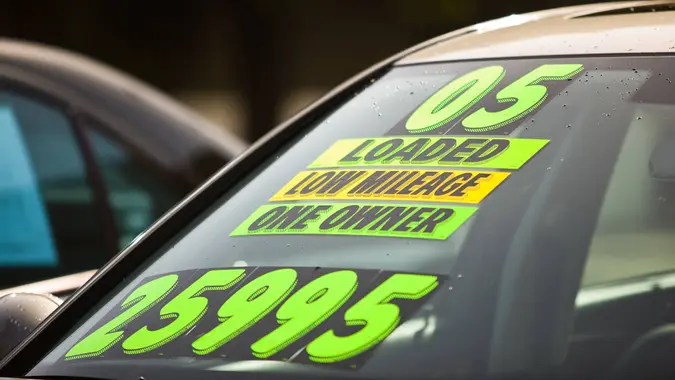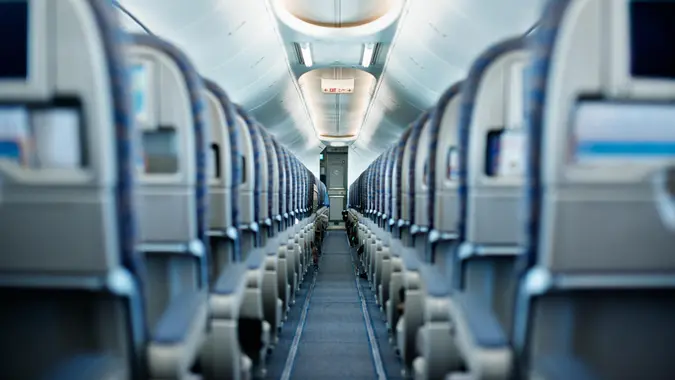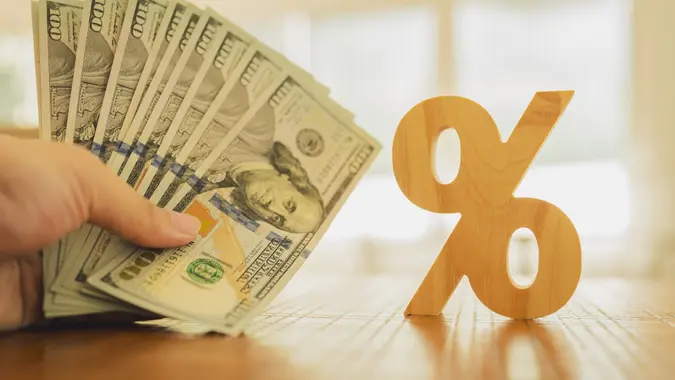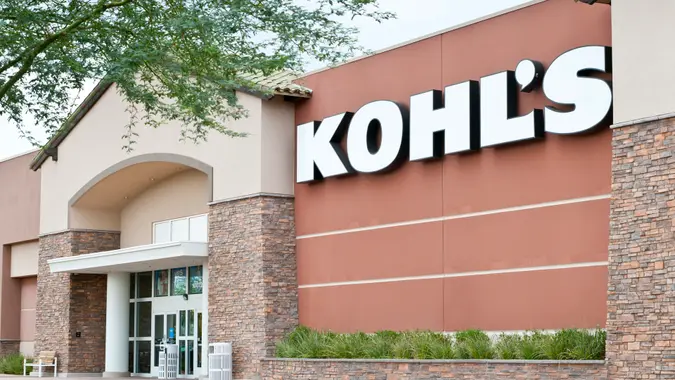6 Purchases Keeping the Lower Class from Becoming Financially Stable

Commitment to Our Readers
GOBankingRates' editorial team is committed to bringing you unbiased reviews and information. We use data-driven methodologies to evaluate financial products and services - our reviews and ratings are not influenced by advertisers. You can read more about our editorial guidelines and our products and services review methodology.

20 Years
Helping You Live Richer

Reviewed
by Experts

Trusted by
Millions of Readers
We’re all prone to making financial mistakes — and one major one for those in the lower class comes down to certain purchases they’re making due to lack of time or resources.
According to experts, this kind of spending behavior will actively hinder them from reaching financial stability.
Below are the kinds of purchases that interfere, and some ideas for combating these spending habits.
Convenience Items
Shirley Mueller, finance expert and founder of VA Loans Texas, noted that low-income individuals often spend disproportionately on convenience items like takeout food, ride-sharing services, or prepackaged goods because they lack the time or resources to plan ahead.
“While these purchases may seem minor, they add up quickly, cutting into what could otherwise be set aside for an emergency fund or savings goal.”
She continued, “For example, spending $10 a day on coffee and snacks could amount to $3,600 a year, money that could go toward reducing debt or building financial security.”
To combat this, she suggested creating simple meal prep routines or carpooling with colleagues.
“Small changes can result in significant savings over time.”
Splurging On Entertainment Or Luxury Brands
Another challenge, Mueller explained, is prioritizing short-term desires over long-term stability.
“This isn’t about frivolous spending, it’s often about seeking moments of relief or joy in the face of financial stress, like splurging on entertainment or luxury brands.”
While it’s important to enjoy life, she said these purchases can derail long-term goals, especially if they are funded by credit.
“I always advise clients to plan for ‘fun spending’ as part of their budget while keeping larger financial goals, like saving for emergencies or retirement, in focus.
“Allocating even small amounts toward savings can grow into a meaningful safety net over time.”
Check-Cashing Services and Money Orders
According to Kevin Shahnazari, founder and CEO of FinlyWealth, check-cashing services and money orders create significant ongoing expenses for those without traditional banking access.
“My platform’s data shows some families spending $500-750 annually just to access their own money.”
He said they use these services because traditional banks often maintain minimum balance requirements or charge fees they cannot consistently meet.
Rent-To-Own Arrangements
Rent-to-own arrangements for essential household items often trap people in high-interest payment cycles.
“When I analyze my clients’ spending data, I regularly see situations where a $500 appliance ends up costing $2,000 through these programs,” said Shahnazari.
“People make these choices not from lack of financial knowledge, but because immediate needs and limited options force their hand.”
Auto Title Loans and Payday Advances
“Auto title loans and payday advances carry extreme interest rates, sometimes reaching 300% APR,” Shahnazari explained.
“One of my clients shared how a $400 emergency car repair led to a payday loan cycle that took 14 months to escape.”
He said many turn to these loans because they lack emergency savings and face urgent needs like medical care or car repairs needed to maintain employment.
Prepaid Phone Cards and Pay-As-You-Go Plans
Shahnazari also noted that prepaid phone cards and pay-as-you-go plans usually cost more per minute than standard phone contracts.
“Working with thousands of users through FinlyWealth, I’ve calculated that low-income families often pay 30-40% more annually for basic phone service compared to contract-based plans available to those with stronger credit profiles.”
More From GOBankingRates
 Written by
Written by  Edited by
Edited by 

























